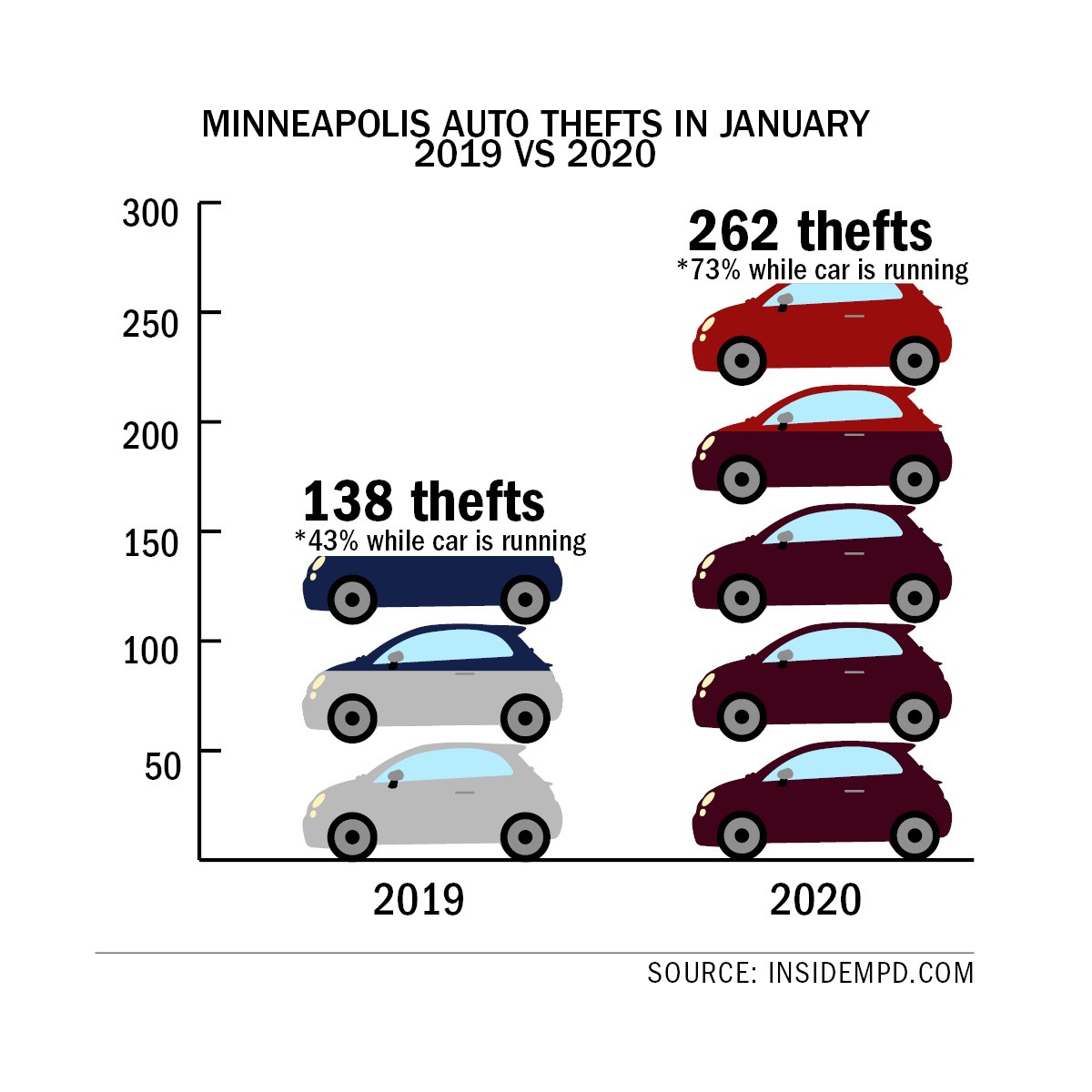As temperatures drop, Minneapolis officials attribute a five-year high in auto thefts to cars being left running.
A citywide total of 262 stolen vehicles were reported between the first and third week of January, up almost 90% from the same time frame last year. Minneapolis Police Department 2nd Precinct neighborhoods including Marcy-Holmes, Como and Prospect Park saw the sharpest increase in auto thefts, rising more than 136 percent from last year.
MPD officials released an advisory last month telling residents to avoid leaving their cars running while unattended. Of the 262 auto thefts at the beginning of the year, about 73% were the result of the owner leaving the vehicle running.
“For most of these, they’re preventable,” said MPD spokesperson Garrett Parten. “I know it’s a pain in the neck to have to [start] your car every time you get back into it, but it’s also no fun to have your car stolen.”
Since the advisory was released, this trend in the 2nd precinct has continued. Auto thefts are up 83% between Jan. 24 to Feb. 11 compared to that time frame last year, according to MPD data.
Como resident Wendy Menken said she left her car unlocked by accident one night late last year. After she found her car had been rustled through, she said she is more careful about locking her car.
“So what it told me is that there are constantly people checking on these cars on the street for an opportunity,” Menken said.
Chris Lautenschlager, executive director of the Marcy-Holmes Neighborhood Association, said he has not seen the issue brought up by neighbors at community meetings. He said car thefts are often easily preventable.
“The idea is that it happens anywhere in the bat of an eye,” Lautenschlager said. “Somebody sees a car that’s turned on, they’re just going to take it — not that they came into the neighborhood thinking, ‘I’m going to steal it’ … or whatever — they just see a car and go, ‘that’s it.’”
Parten said intervention by residents can help prevent auto thefts.
“If I’m seeing people pulling on car doors, I’m going to stop that person because that’s suspicious behavior — but that’s because I’m in the area, and I’m seeing it happen,” Parten said. “We can’t be everywhere all the time. So that’s where the public comes in. [Their] steps of preventative measures help us reduce crime in the long run.”








